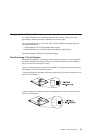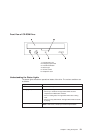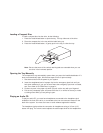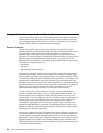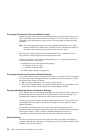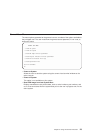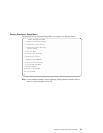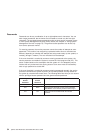
Chapter 3. Using the Service Processor
Notes:
1. Any section of this chapter that reference partioned systems or partitioning a system
do not pertain to Model 6C4 or Model 6E4.
2. The information in this chapter regarding the configuring of serial ports, and
modems attached to those serial ports, applies only to the serial ports (S1 and S2)
on the CEC backplane (location U0.1-P1). None of this information is applicable to
the serial ports, or modems attached to those serial ports, on the HMC.
The service processor runs on its own power boundary and continually monitors
hardware attributes and the environmental conditions within the system. The service
processor is controlled by firmware and does not require the AIX operating system to be
operational to perform its tasks.
The service processor menus allow you to configure service processor options, as well
as enable and disable functions.
Service processor menus are available using an ASCII terminal or an HMC virtual
terminal window when OK is displayed on the operator panel or when the service
processor has detected a system problem (such as a surveillance failure).
Service Processor Menus
The service processor menus are divided into the following groups:
v General user menu - the user must know the general-access password.
v Privileged user menus - the user must know the privileged-access password.
If the system is powered off, the service processor menus can be accessed locally or
remotely on the following:
v Serial port 1 (S1)
v Serial port 2 (S2)
v HMC
27



